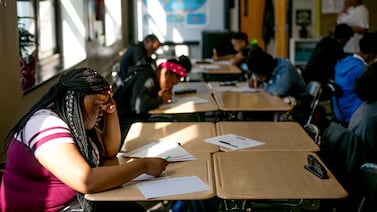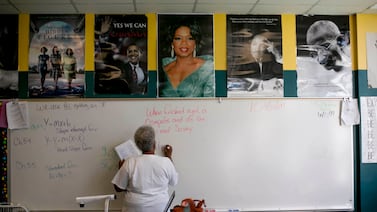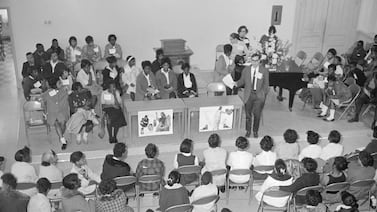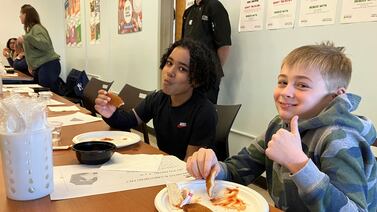The newest college-going rate for Indiana high school graduates is about the same as it was for the graduating class the year before.
Last year, data from the Indiana Commission for Higher Education showed the high school class of 2020 had a 53% college-going rate, which was a significant drop even with years of declining enrollment, prompting concern from state leaders.
This year, the commission’s data showed that the college-going rate for Indiana high school graduates in the class of 2021 was a “mild decline,” the smallest decline in a decade, according to Indiana Commissioner for Higher Education Chris Lowery.
The class of 2021 went to college at a rate of 52.9%, a half of a percentage point down from 53.4% for the class of 2020. That meant that about 400 fewer high school graduates went to college. This rate is the percentage of students going directly from high school to some form of college — which ranged from less than one-year certificates to four-year degrees.
The 2023 College Readiness Report, which includes data about the class of 2021, has not been released yet, but Lowery previewed the data as part of his report at the Indiana Commission for Higher Education meeting Thursday.
Lowery said he’s hopeful initiatives underway will boost the rate in coming years.
Also included in the preview of the data were college-going rates for several groups of students.
The college-going rate for Black high school graduates in the class of 2021 was 45%, an increase of two percentage points from the previous year, and it was 43% for Hispanic and Latino high school graduates, a drop of one percentage point.
Among 21st Century Scholars in the class of 2021, 80.8% went to college compared with 30.1% of students from low-income backgrounds who didn’t use the scholarship and 59.2% of students from high-income backgrounds.
The 21st Century Scholars program offers up to the equivalent of four years tuition and regular fees at an in-state public university or college to students who meet income and residency eligibility. Students must pledge to follow requirements like maintaining a minimum GPA.
Previously, students had to opt into the scholarship before high school, but a change in state law now means that all students who qualify will be automatically enrolled in the scholarship, but have the option to opt out.
Students in the high school class of 2021 had their junior and senior years of high school, the time when college decisions are made, interrupted by the COVID-19 pandemic.
Lowery said the full 2023 College Readiness Report is expected within a few weeks.
MJ Slaby oversees Chalkbeat Indiana’s coverage as bureau chief and covers higher education. Contact MJ at mslaby@chalkbeat.org. Chalkbeat Indiana partners with Open Campus on higher education coverage.








